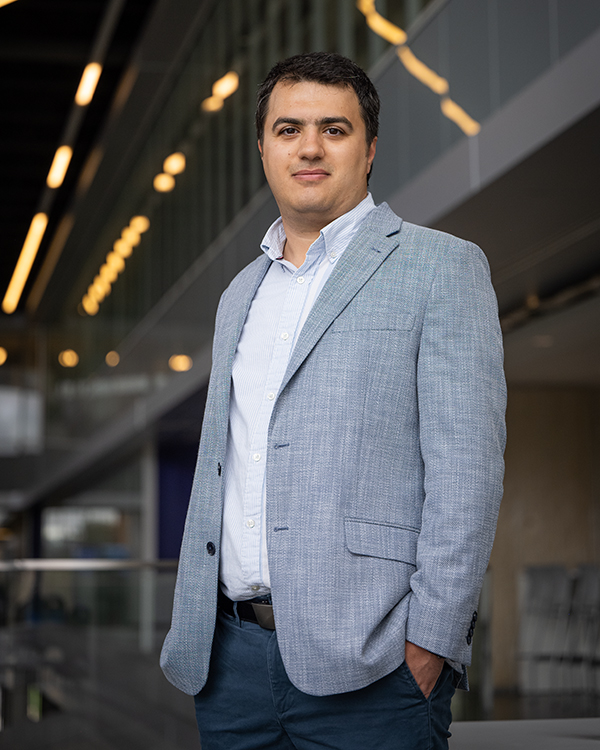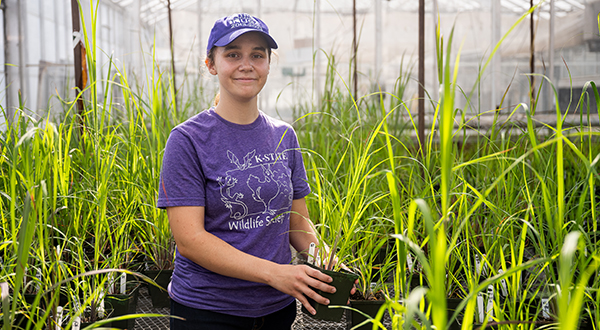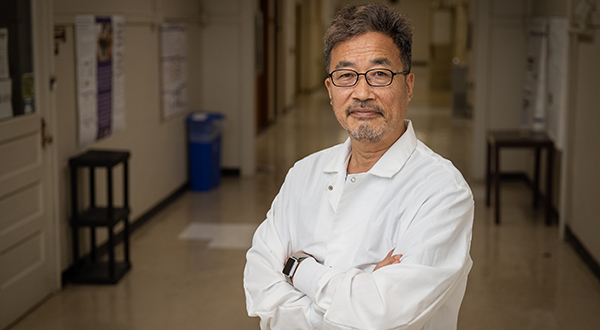Mathematical organs
Chemical engineer explores machine learning as way to replace drug trials
Davood Pourkargar is using an NSF grant to develop a physics-informed computational framework to predict disease progression and drug delivery dynamics more precisely.
 By Brennan Bestwick
By Brennan Bestwick
K-State News and Communications Services
For every intended and desired chemical reaction that makes a drug candidate a promising medical treatment, there always remain various unintended and unknown reactions that pharmaceutical researchers must determine before creating the next revolutionary drug.
Traditionally, the best option has been to first test these chemical reactions in animals — a process that is costly, imprecise and slow, especially when thousands of reactions might need to be tested.
Fortunately, Davood Pourkargar is working on a faster, more efficient alternative.

Pourkargar, an assistant professor in the Tim Taylor Department of Chemical Engineering at Kansas State University, has received a grant from the National Science Foundation to develop a physics-informed computational framework to predict disease progression and drug delivery dynamics more precisely. The framework will use “organ-on-a-chip” technology, which uses tiny microfluidic chips lined with small volumes of fluid and living cells, that researchers can use to mimic and study an organ’s responses to stimuli like drugs.
Compared to animal testing, the technology gives researchers a more accurate, if computer-based, representation of the physical human organ system and its behaviors — with all experimentation occurring in a laboratory setting.
He will then use his mathematical presentation of the organs to design experiments and optimize drug discovery.
“My focus is on developing a digital twin framework by combining computational physiological modeling and machine learning to accelerate the discovery process,” Pourkargar said. “When we verify our understanding of the physiology using organ-on-a-chip systems, it is much easier to tailor that knowledge to the real organs.”
Pourkargar is no stranger to the challenge of untangling the mysteries of complex process networks. Before joining K-State in 2020, his research focused on applying computational modeling for automation in the chemical and energy industry. At K-State, he leads the Intelligent and Sustainable Process Systems Lab and credits collaborations with K-State colleagues for his interest in biological systems.
“The structure and behavior of human organs are complex, similar to highly integrated chemical, biological and energy systems,” Pourkargar said. “Many well-established computational modeling and process systems engineering tools can be reframed to address challenging problems in human biology and medicine.”
Pourkargar spent summer 2024 at California’s Terasaki Institute for Biomedical Innovation, learning from biomedicine and tissue engineering leaders before beginning his experiments at K-State.
“If we have a comprehensive mathematical model that can predict organ dynamics correctly, we can do experiments in parallel billions of times on different conditions on a computer.”
Pourkargar’s organ-on-a-chip experiments will start with cells from the liver — a remarkably complex organ that lacks the drug options needed to treat diseases such as non-alcoholic fatty liver disease. Pourkargar chose the intricate organ in order to establish a strong foundation for his research.
Once his computational method is optimized, Pourkargar envisions a future where drug discovery is accelerated, and development costs are significantly reduced.
The potential for better patient options and fewer side effects is revolutionary, he said.
“If we have a comprehensive mathematical model that can predict organ dynamics correctly, we can do experiments in parallel billions of times on different conditions on a computer,” Pourkargar said. “And that will give us some insight to get the most probable drug candidates much faster.”


